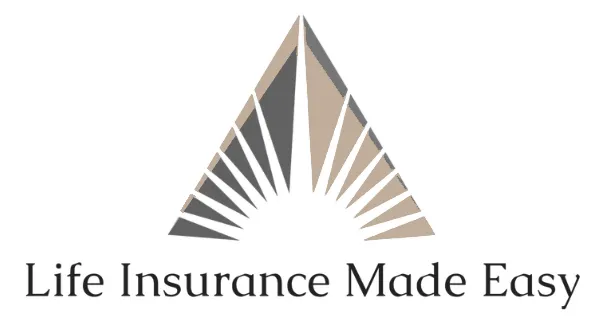
What is Income Protection Life Insurance, and Why Do You Need It?
In today's fast-paced world, your income is key to your financial security. But what if illness, injury, or disability stops you from working? That's where income protection life insurance comes in. It's a vital safety net for your financial health. But do you really get how crucial it is? Let's explore this important question together.
Income protection life insurance gives you a steady income if you can't work due to illness or injury. It's different from traditional life insurance, which pays a lump sum to your loved ones if you pass away. This insurance ensures your family's financial safety by covering part of your lost income. It's a vital part of securing your financial future.

At its core, income protection insurance values your ability to earn an income above all else. It protects this vital asset, ensuring your family's financial security, no matter what life throws your way. This coverage brings peace of mind, letting you focus on healing without worrying about money.
Key Takeaways:
Income protection life insurance safeguards your financial security by replacing a portion of your lost earnings if you're unable to work due to illness or injury.
This coverage complements traditional life insurance by addressing the risk of losing your primary source of income, ensuring your family's stability.
Protecting your earning potential is crucial, as your ability to generate income is your most valuable asset.
Income protection insurance can provide much-needed financial stability and peace of mind during challenging times.
Understanding the benefits of this specialized coverage can help you make informed decisions about protecting your family's financial future.
Understanding Income Protection Life Insurance Fundamentals
Income protection life insurance is key to keeping your income safe. It's different from life insurance, which mainly helps your family after you're gone. This type of insurance keeps your income coming in if you can't work because of illness or injury.
Key Components of Coverage
The main parts of income protection insurance are:
Disability coverage: Gives you a part of your income if you can't work because of illness or injury.
Income replacement policies: Helps keep your standard of living by replacing a part of your earnings before you got sick or hurt.
Salary continuance plans: Keeps your paycheck coming, even if you can't do your job anymore.
How Income Protection Differs from Traditional Life Insurance
Life insurance and income protection insurance are different. Life insurance protects your family if you die. Income protection insurance keeps your income coming in if you get sick or hurt.
Policy Structure and Benefits
Income protection insurance policies have various options. You can choose short-term or long-term disability benefits, waiting periods, and how long benefits last. These options let you customize the policy to fit your needs and budget.

"Income protection insurance is a vital safety net that can mean the difference between financial security and hardship during challenging times."
The Critical Role of Income Protection Insurance and Life Insurance
Financial protection is key in today's world. Income protection insurance and life insurance are vital. They help keep our finances safe, especially during unexpected times.
Income protection, or disability insurance, helps if you can't work due to illness or injury. It's great for those who need their income for daily needs. Critical illness insurance adds extra protection for serious illnesses like cancer or heart disease.
Life insurance ensures your family is taken care of if you pass away. It helps them financially, so they can focus on healing. Long-term care insurance also helps with future medical costs.
Income protection and life insurance together create a strong financial protection plan. They keep your family safe and give you peace of mind. It's important to know what each policy covers and what it doesn't.


Insurance Type Key Benefit Coverage Details Income Protection Insurance Replaces a portion of your income if you become unable to work Covers short-term and long-term disabilities, critical illnesses, and other conditions that prevent you from earning an income Life Insurance Provides financial security for your loved ones in the event of your passing Offers a lump-sum payment to your beneficiaries, helping them cover expenses, pay off debts, and maintain their standard of living Long-Term Care Insurance Helps cover the costs of extended medical care Provides coverage for nursing home stays, assisted living, and in-home care, ensuring your family is not burdened with these expenses
Understanding income protection and life insurance is crucial. It helps secure your financial future and protects your loved ones. This approach to planning offers peace of mind and safety for everyone.
Evaluating Your Need for Income Protection Coverage
Protecting your financial future is key. Income protection insurance is a vital safety net. It ensures you and your family are cared for if you can't work due to an unexpected event.
Assessing Your Financial Vulnerability
Start by examining your finances. Look at your income, debts, and any extra income plans. This will show how vulnerable you are if you lose your main income.
Calculating Adequate Coverage Amounts
Figure out your monthly living costs, like rent, utilities, and groceries.
Include any debts you need to pay off.
Find out how much coverage you need to meet your financial needs.
Risk Assessment Factors
Think about the risks you face. Your job, age, and health are important. For example, jobs with high risks or health issues may need more coverage.

By looking at your financial situation, calculating coverage, and considering your risks, you can choose the right income protection. This ensures your financial security and peace of mind.

Types of Income Protection Policies Available
There are many ways to protect your income and financial well-being. You can choose from short-term disability, long-term disability insurance, and sick pay insurance. Each has its own benefits and features to fit your needs.
Short-Term Disability Insurance
Short-term disability insurance helps when you're out sick or hurt for a short time. It usually starts right away or after a few days. It covers a part of your income for 3 to 6 months while you get better.
Long-Term Disability Insurance
Long-term disability insurance kicks in after short-term coverage ends. It starts after 90 days or more and can last for years or until you retire. It's meant to replace most of your income if you can't work for a long time.
Sick Pay Insurance
Sick pay insurance, or temporary disability insurance, helps if you're out sick or hurt. It's meant to add to short-term disability coverage. It gives extra financial support when you're not working.

Knowing the differences between these options helps you choose the right one. This ensures you have the financial protection you need.
Benefits and Features of Paycheck Protection Plans
Income protection insurance is key for securing your financial future. These plans act as a safety net during temporary disabilities. They help keep your standard of living and meet essential financial needs. Let's dive into the main benefits and features of these plans.
Short-term vs. Long-term Coverage Options
Income protection insurance has two main types: short-term and long-term. Short-term plans cover 3 to 24 months, helping during brief illnesses or injuries. Long-term policies offer coverage for years or until retirement, providing a stronger safety net.
Waiting Periods and Benefit Duration
When picking an income protection plan, knowing about waiting periods and benefit duration is crucial. Waiting periods are the time from disability onset to when benefits start, usually 14 to 180 days. Benefit duration shows how long you'll get payments, from a few months to years or until retirement.
Premium Payment Structures

Knowing these premium structures helps pick the best option for your budget and financial goals.
Exploring paycheck protection plans' benefits and features helps you choose the right temporary disability benefits, income protection insurance, and benefit duration. This ensures the financial security you and your family need.
Common Exclusions and Policy Limitations
When looking at income protection life insurance, it's important to know about exclusions and limits. These can affect how much coverage you get. So, it's key to check them out well when deciding.
Pre-existing conditions are often not covered. This means if you had a health issue before getting the policy, you might not get help for it. Knowing what counts as a pre-existing condition is crucial.
Coverage limits are another thing to watch out for. Policies usually have a cap on how much they can pay out each month or year. It's important to pick a policy that fits your financial needs.
Also, policies might have policy restrictions. These can limit what kind of events or jobs are covered. For example, some policies might not cover certain illnesses or injuries, or jobs that are too risky.

Knowing about these common exclusions and limits helps you choose the right policy. This way, you can protect your financial future.
"Carefully reviewing the fine print of your income protection policy is essential to avoiding unexpected gaps in coverage."
Cost Factors and Premium Considerations
Income protection life insurance costs vary based on several factors. Knowing these factors helps you choose a policy that fits your budget and needs.
Age and Health Impact on Rates
Your age and health are key in determining your insurance costs. Young, healthy people usually pay less. As you get older, your rates may go up because you're more likely to need benefits.
Occupation Risk Categories
Your job can also affect your insurance costs. Jobs with high risks, like construction or law enforcement, might cost more. Insurers look at your job's risks when setting your rates.
Policy Rider Options
You can add extra features to your policy with riders. These might include cost-of-living adjustments or guaranteed-renewable clauses. But, they can also raise your costs. Make sure these extras are worth it to you.

Understanding these cost factors and premium considerations helps you pick the right income protection life insurance. This ensures it meets your unique needs and financial goals.
How to Choose the Right Income Protection Plan
Finding the right income protection plan can be tough, but it's doable with the right help. You need to compare insurance options carefully and work with a financial advisor. This way, you can make a choice that fits your needs.
First, think about your financial situation and how much risk you can handle. Look at your income, family, savings, and what might happen if you get sick or hurt. This helps you figure out how much coverage you need.
Look at different policy selection options: Check out income protection plans from various companies. Focus on what they cover, how long you have to wait before getting benefits, and how long those benefits last.
Get advice from a financial advisor: A good financial advisor can help you pick the best policy. They make sure it matches your financial goals and how much risk you're okay with.
Read the fine print: Know what's not covered by your policy. Look for any rules about pre-existing conditions or jobs that might be risky.
Think about extra features: Some policies offer extra benefits like adjusting benefits for inflation or covering partial disabilities. These can make your coverage better and give you more peace of mind.
By carefully comparing insurance and getting advice from a financial advisor, you can find a plan that protects your income. This way, you can feel secure about your financial future.
"Protecting your income is just as important as protecting your life. With the right income protection plan, you can have peace of mind knowing your family is covered, no matter what life may bring."
Filing Claims and Receiving Benefits
Understanding income protection life insurance is key. We'll show you how to file a claim and get your benefits. This will make the process smooth and easy.
Documentation Requirements
To start the claims process, you need certain documents. These include:
Proof of income before you got disabled
Medical records about your condition
Completed claim forms from your insurance company
Identification like a driver's license or passport
Claims Process Timeline
The time it takes to process a claim varies. But here's what usually happens:
Claim submission: You send the needed documents to your insurance company.
Claim review: The company checks your claim and documents to see if you're eligible.
Claim approval: If approved, the company starts the benefit payout.
Benefit distribution: You get the agreed-upon benefit, often through direct deposit or a check.
Benefit Distribution Methods
Insurance benefits can be given in different ways. These include:
Direct Deposit: The company sends the benefit directly to your bank account.
Check: You get a physical check to deposit or cash.
Lump-sum Payment: You get the whole benefit amount at once.
Periodic Payments: The benefit is given in smaller, regular amounts over time.
Knowing the claims process and how benefits are paid helps. It makes filing an insurance claims and getting your benefit payout smoother during claims adjudication.
Conclusion
In this article, we've looked at how income protection life insurance is key to keeping your finances safe. It also helps protect your family. By learning about this coverage, you can make smart choices to keep your income safe. This ensures your loved ones are taken care of, even when unexpected things happen.
Income protection insurance is more than just life insurance. It acts as a safety net for your family's money when you're sick, hurt, or can't work. By picking the right policy for you, you can protect your income security and give your family more family protection.
When you look at different policies and think about what affects coverage and costs, remember your main goal. Your financial health and peace of mind are what matter most. With the right income protection plan, you can face life's ups and downs with confidence. You'll know your family's financial future is secure.
FAQ
What is income protection life insurance, and why do I need it?
Income protection life insurance combines income protection and life insurance. It helps keep your family financially stable if you're unable to work due to illness or injury. It also offers life insurance benefits to protect your loved ones if you pass away.
How does income protection life insurance differ from traditional life insurance?
Traditional life insurance pays a lump sum to your beneficiaries when you die. Income protection life insurance does more. It covers your lost income if you're disabled or seriously ill, helping your family keep up their lifestyle.
What are the key components of income protection life insurance coverage?
Income protection life insurance includes disability coverage and income replacement. It also has salary continuance plans. These features provide broad financial protection against various life events that might affect your income.
How do I assess my need for income protection coverage?
To figure out if you need income protection, look at your financial situation and income needs. Consider your risk factors. This helps you find the right coverage for your financial goals and life situation.
What types of income protection policies are available?
There are short-term disability, long-term disability, and sick pay insurance policies. Each offers different benefits and coverage periods. You can choose the one that fits your needs best.
What are the benefits and features of paycheck protection plans?
Paycheck protection plans cover temporary or long-term disability. They offer short-term and long-term options with various waiting periods and benefit lengths. You can also adjust the premium to fit your budget.
What are some common exclusions and limitations in income protection life insurance policies?
Policies might exclude pre-existing conditions, self-inflicted injuries, or high-risk activities. Always check the policy terms to know what's not covered.
What factors influence the cost of income protection life insurance premiums?
Premiums depend on your age, health, job, and coverage level. Policy riders and customization can also affect the cost. Knowing these factors helps you choose the right policy.
How do I choose the right income protection plan for my needs?
Compare policies, look at coverage options, and consider your financial situation and risk. A financial advisor can help you pick the best plan for you.
What is the process for filing a claim and receiving benefits from an income protection life insurance policy?
To file a claim, provide medical records and proof of disability or illness. The insurer will review it and decide on benefits. Knowing the claims process ensures a smooth payout.




